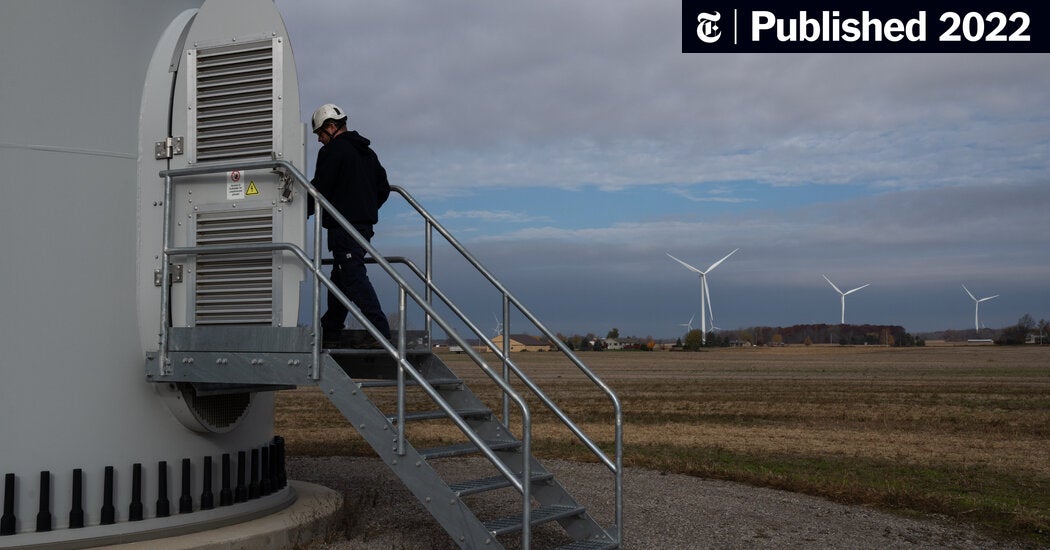The NYT has a long deep dive into the financial incentives, lobbying and finance contributions that led to the IRA (sorry if paywalled):

 www.nytimes.com
www.nytimes.com
Basically, is says that the IRA was written with broad buy-in and contributions from the electrical utility industry (lobbyists), in many cases the very same utilities that bankrolled a bunch of dark-money efforts to kill/block Obama's 'Clean Power Plan' a decade ago.
While the CEOs are quoted about getting religion on Climate Change in the intervening period, the article points out the massive financial incentives that Uncle Sam is throwing their way... including opening some massive tax loopholes that were closed decades ago, that utilities has benefitted from before.
They also point out that campaign donations from these lobbyists have shifted from mostly Rep to mostly Dem, and big money to Manchin and Sinema sealed the deal in the end.
The tone of the article is a bit too cynical IMO, bc we are talking about industrial policy that will spur many trillions of dollar of private investment over the next decade, using 10-100s of billions in govt tax breaks. And maybe 10s of millions in campaign finance to grease the wheels. I think the relative number of zeros on the dollar figures matters. You are ofc welcome to disagree and be horrified and think its too much pork!
Also, the article linked to an academic modeling report of the IRA impact that I thought was pretty readable:
The electricity sector stuff is on page 11 and 12, and shows a large buildout of solar and wind spurred by the Act. Amounting to a few trillion $ in new capital investment in those technologies over the decade.
On page 10 the model indicates that rather than total household energy costs (including transportation fuel) rising by 4% over the next decade, after the IRA they will fall by 6%. This figure appears to be in constant dollars (inflation corrected), and not adjusted for population. So it probably means that cost projections going forward were roughly flat (inflation corrected) under baseline policy, and the IRA investments should reduced those bills by ~10% in a decade.
To be cynical, $300B divided by 100M households is $3k/household, versus a couple hundred dollars per year in 10 years... simple payback of 10 years?
Your thoughts?

With Federal Aid on the Table, Utilities Shift to Embrace Climate Goals (Published 2022)
As billions in government subsidies were at stake, the electric utility industry shed its opposition to clean-air regulation and put its lobbying muscle behind passing President Biden’s climate bill.
Basically, is says that the IRA was written with broad buy-in and contributions from the electrical utility industry (lobbyists), in many cases the very same utilities that bankrolled a bunch of dark-money efforts to kill/block Obama's 'Clean Power Plan' a decade ago.
While the CEOs are quoted about getting religion on Climate Change in the intervening period, the article points out the massive financial incentives that Uncle Sam is throwing their way... including opening some massive tax loopholes that were closed decades ago, that utilities has benefitted from before.
They also point out that campaign donations from these lobbyists have shifted from mostly Rep to mostly Dem, and big money to Manchin and Sinema sealed the deal in the end.
The tone of the article is a bit too cynical IMO, bc we are talking about industrial policy that will spur many trillions of dollar of private investment over the next decade, using 10-100s of billions in govt tax breaks. And maybe 10s of millions in campaign finance to grease the wheels. I think the relative number of zeros on the dollar figures matters. You are ofc welcome to disagree and be horrified and think its too much pork!
Also, the article linked to an academic modeling report of the IRA impact that I thought was pretty readable:
The electricity sector stuff is on page 11 and 12, and shows a large buildout of solar and wind spurred by the Act. Amounting to a few trillion $ in new capital investment in those technologies over the decade.
On page 10 the model indicates that rather than total household energy costs (including transportation fuel) rising by 4% over the next decade, after the IRA they will fall by 6%. This figure appears to be in constant dollars (inflation corrected), and not adjusted for population. So it probably means that cost projections going forward were roughly flat (inflation corrected) under baseline policy, and the IRA investments should reduced those bills by ~10% in a decade.
To be cynical, $300B divided by 100M households is $3k/household, versus a couple hundred dollars per year in 10 years... simple payback of 10 years?
Your thoughts?
Last edited:


 Why on earth they chose to glom atop one of the most frequently used acronyms in the history of mankind for a climate bill, is something I'll never understand, particularly when it runs counter to "Inflation Reduction".
Why on earth they chose to glom atop one of the most frequently used acronyms in the history of mankind for a climate bill, is something I'll never understand, particularly when it runs counter to "Inflation Reduction".